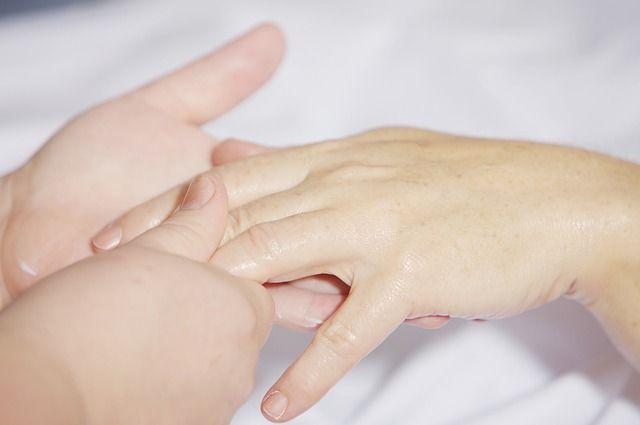Choosing the Right Massage: Deep Tissue vs. Swedish for Pain Relief

Introduction:
Pain is a universal experience that affects us all at some point in our lives. Whether it's chronic muscle tension, limited mobility, or the stress of everyday life, finding relief is essential. This is where massage therapy comes in. With its ability to alleviate pain and promote relaxation, massage has become a popular option for many seeking relief. In this blog post, we will explore two popular types of massage - deep tissue and Swedish - and help you make an informed decision about which one is right for your pain relief needs.
I. Understanding Deep Tissue Massage:
Deep tissue massage is a therapeutic technique that targets the deeper layers of muscle and connective tissue in the body. Unlike Swedish massage, which focuses on relaxation, deep tissue massage aims to address chronic pain, muscle tension, and limited mobility. By using slow strokes and focused pressure, a skilled massage therapist is able to reach deeper muscles and release tension.
The primary goal of deep tissue massage is to break up adhesions (knots) in the muscles and restore proper movement and function. This type of massage can be particularly beneficial for individuals with chronic pain conditions such as fibromyalgia or arthritis. It can also help athletes recover from injuries and improve their overall performance.
While deep tissue massage can provide significant pain relief, it is important to note that it may not be suitable for everyone. Individuals with certain medical conditions, such as blood clotting disorders or osteoporosis, should consult with their healthcare provider before receiving deep tissue massage. Additionally, it is normal to experience some soreness or discomfort after a deep tissue session, as the muscles have been deeply worked.
II. Exploring Swedish Massage:
Swedish massage, on the other hand, is a gentle and relaxing form of massage therapy that focuses on promoting circulation, reducing stress, and inducing relaxation. It is the most common type of massage and often serves as a foundation for other massage techniques.
During a Swedish massage, the therapist will use long gliding strokes, kneading, and rhythmic tapping motions to release tension and promote overall well-being. The pressure applied is typically lighter compared to deep tissue massage, making it a more suitable option for individuals who prefer a gentler touch.
Swedish massage has numerous benefits beyond pain relief. It can help improve sleep quality, reduce anxiety and depression, and enhance immune function. It is also a great option for those who simply want to relax and unwind after a long day.
III. Comparing Deep Tissue vs. Swedish Massage:
When deciding between deep tissue and Swedish massage, it is crucial to consider your specific needs and preferences. Here are some key differences between the two:
-
Pressure intensity: Deep tissue massage involves more focused and intense pressure, targeting specific areas of pain and tension. Swedish massage, on the other hand, uses lighter pressure and a broader range of techniques to promote relaxation.
-
Purpose: Deep tissue massage aims to address chronic pain and muscle tension, while Swedish massage primarily focuses on relaxation, stress reduction, and improving overall well-being.
-
Techniques employed: Deep tissue massage uses slower strokes and more intense pressure, while Swedish massage incorporates long gliding strokes, kneading, and tapping motions.
It's important to communicate your preferences and concerns with your massage therapist, as they can customize the session to meet your individual needs. If you have a lower pain tolerance or simply want to relax and unwind, Swedish massage may be the better option. However, if you have specific areas of chronic pain or require more targeted relief, deep tissue massage might be the way to go.
IV. Making an Informed Decision:
To make an informed decision about which type of massage is right for you, it is best to consult with a licensed massage therapist. They can assess your unique situation, listen to your concerns, and recommend the most appropriate type of massage based on your individual needs.
When searching for a qualified therapist or reputable spa, consider asking for recommendations from friends or family members who have had positive experiences. Read online reviews and check the therapist's credentials to ensure they are licensed and trained in the specific type of massage you are interested in.
During the massage session, it is important to maintain open communication with your therapist. Let them know if you experience any pain or discomfort, as they can adjust the pressure or techniques accordingly. Remember, everyone's pain tolerance and preferences are different, so it may take some trial and error to find the perfect massage style for you.
Conclusion:
In conclusion, both deep tissue and Swedish massages offer unique benefits for pain relief and relaxation. Deep tissue massage targets deeper layers of muscle and connective tissue to address chronic pain and limited mobility, while Swedish massage focuses on promoting circulation, reducing stress, and inducing relaxation. By understanding the differences between these two types of massage and consulting with a licensed therapist, you can make an informed decision and experience the potential benefits of massage therapy firsthand. So, why wait? Schedule a consultation or appointment with a licensed massage therapist and take the first step towards finding relief from your pain.
FREQUENTLY ASKED QUESTIONS
What is the difference between a Deep Tissue massage and a Swedish massage?
A Deep Tissue massage and a Swedish massage are both popular types of massage therapy, but they differ in their techniques and intended outcomes.A Deep Tissue massage focuses on targeting the deeper layers of muscles and connective tissues in the body. It uses slower and more intense strokes to release tension and alleviate chronic muscle pain. This type of massage is particularly beneficial for individuals who experience tightness and stiffness in their muscles, such as athletes or those with chronic pain conditions.
On the other hand, a Swedish massage is a gentler and more relaxing form of massage. It involves long, flowing strokes, kneading, and circular motions to promote overall relaxation, improve circulation, and relieve muscle tension. Swedish massage is often recommended for individuals who want to reduce stress, unwind, and experience a general sense of well-being.
While Deep Tissue massage primarily targets specific areas of tension and deep muscle knots, Swedish massage provides a more comprehensive body relaxation experience. However, it's important to note that both types of massage can be customized to meet individual needs and preferences.
Ultimately, the choice between a Deep Tissue massage and a Swedish massage depends on your specific goals and preferences. If you're looking to address chronic muscle pain or tension, a Deep Tissue massage might be more suitable. If you simply want to relax and rejuvenate, a Swedish massage can offer the relaxation you seek. It's always a good idea to communicate your needs and expectations with your massage therapist to ensure you receive the most appropriate treatment for your body's needs.
Which massage is better for pain relief?
When it comes to pain relief, there are several types of massage that can be beneficial. Two popular options are deep tissue massage and Swedish massage.Deep tissue massage focuses on targeting the deeper layers of muscle and connective tissue to release tension and alleviate pain. It involves applying firm pressure and slow strokes to specifically address areas of discomfort. This type of massage can be effective for chronic pain or muscle injuries.
On the other hand, Swedish massage uses long, flowing strokes and gentle kneading to promote relaxation and improve circulation. While it may not be as intense as deep tissue massage, it can still provide relief from general aches and pains.
Ultimately, the best massage for pain relief depends on your specific needs and preferences. If you prefer a more intense and targeted approach, deep tissue massage may be the better choice. However, if you're looking for a more gentle and relaxing experience, Swedish massage could be the way to go.
It's always a good idea to consult with a professional massage therapist who can assess your individual situation and recommend the most suitable treatment for your pain relief needs.
Will Deep Tissue massage be painful?
Deep tissue massage can sometimes be uncomfortable or even slightly painful, especially if you have a lot of tension or knots in your muscles. The therapist will use firm pressure and slow strokes to target the deeper layers of muscle and connective tissue. While some discomfort may be experienced during the session, it is important to communicate with your therapist and let them know if the pressure is too intense. They can always adjust their techniques to ensure your comfort and well-being. It's also normal to feel some soreness or tenderness in the days following the massage, but this should gradually subside. Remember, the goal of deep tissue massage is to alleviate muscle tension and promote relaxation, so it's worth the temporary discomfort for the long-term benefits.
Can I request a combination of Deep Tissue and Swedish techniques?
Yes, absolutely! You can definitely request a combination of Deep Tissue and Swedish techniques for your massage. This is actually quite common and many massage therapists are trained in both styles. Deep Tissue massage focuses on releasing tension and knots in the deeper layers of muscles, while Swedish massage uses long, flowing strokes to promote relaxation and improve circulation. By combining these two techniques, you can experience the benefits of both therapeutic and relaxation massage. Just let your massage therapist know your preferences and they will tailor the session to meet your needs. Enjoy your massage!




